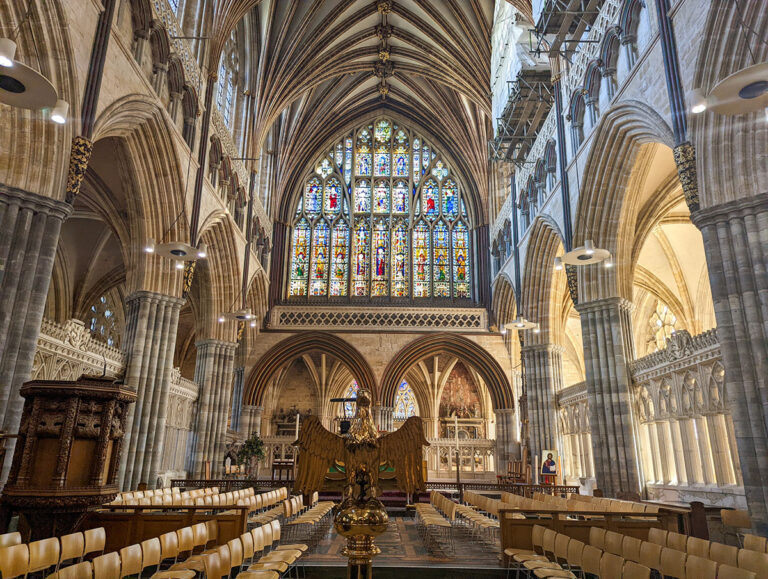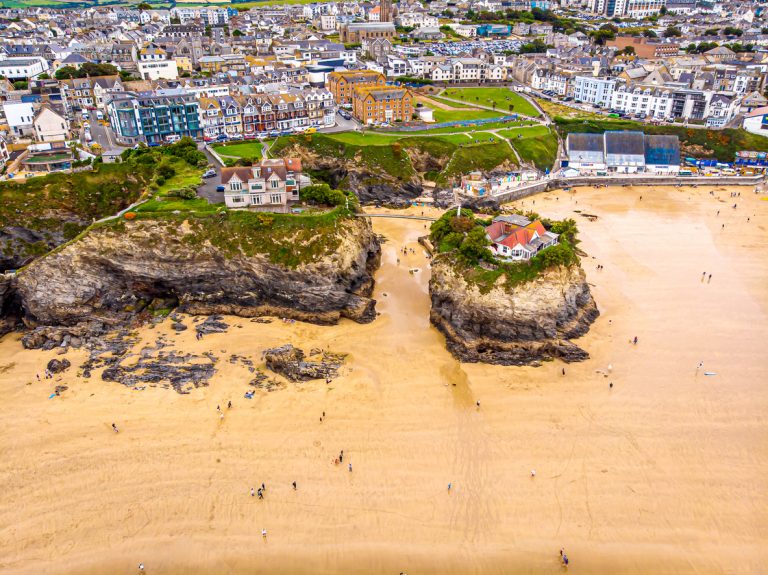How to Visit Pendennis Castle: Falmouth’s Coastal Fortress
If you’re visiting Falmouth, why not head to Pendennis Castle and watch 500 years of history come alive?
Pendennis Castle was built due to the threat of invasion and remained a mighty fortress when it came to defending historic England.
Sitting on a headland overlooking Carrick Roads and the Fal Estuary, it is a place of immense history and intrigue. If you want to visit Pendennis Castle, this blog post has all the information you’ll need!
About Pendennis Castle
Pendennis Castle is one of the most impressive fortresses in Cornwall. Built in the 16th century, it is a fine example of a well-preserved Henrician castle.
It overlooks the Fal Estuary and Carrick Roads, with amazing sweeping views across the river and sea.
Is Pendennis Castle National Trust?
No, Pendennis Castle is run by the English Heritage.
Therefore, you will need to be an English Heritage or Cornwall Heritage Trust member to qualify for free entry.
You can read my English Heritage review here or my National Trust review here.
Or, read my English Heritage vs National Trust post here.
Pendennis Castle history
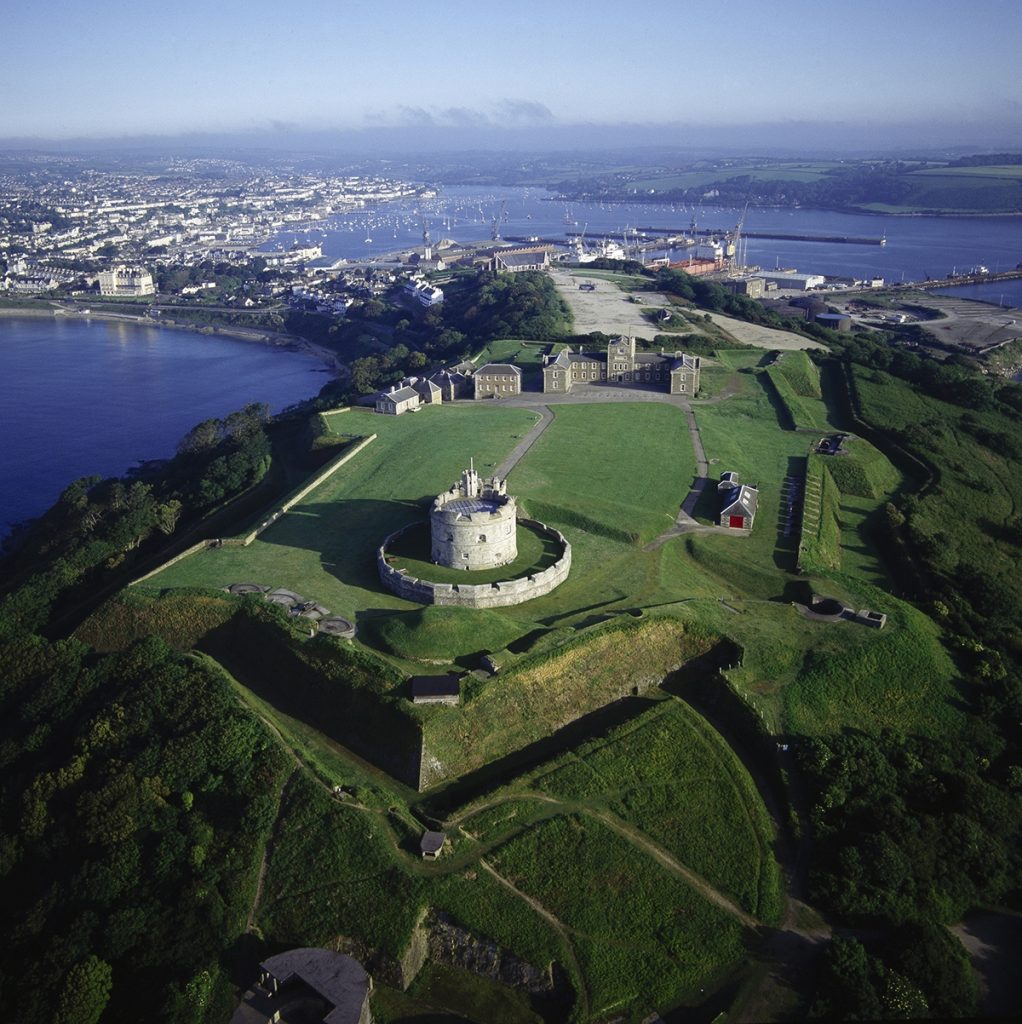
Why was Pendennis Castle built?
Pendennis Castle is a fascinating place. It was built by Henry VIII in 1539 to defend the Cornish coast.
In Tudor times, the security of British coasts was a big problem. In the 16th century, Henry VIII kept making enemies of both France and Spain. The threat of coastal invasion was always present – especially after he divorced Catherine of Aragon and failed to arrange a marriage alliance with France.
Therefore, he constructed Pendennis and St Mawes Castle, which is located just over the Fal Estuary, amongst many other coastal castles, to protect the country against foreign invasion.
He decided to build a castle here, at the meeting place of Carrick Roads and the Fal, because of the deep natural estuary that was a prime position for foreign powers to attack.
Pendennis Castle was a circular coast fortress, so troops could fire all over the castle. At first, it just had basic defences, but they added bastions in 1590 in response to the growing threat of Spanish invasion; there were planned attempts at invasion throughout the latter 16th century, including one where they specified that they planned to land at Carrick Roads.
However, the only actual invasion of Cornwall was when the Spanish attacked Mousehole and Penzance a few decades later!
Was Falmouth a town when Pendennis Castle was built?
The castle is still in good condition and harks back to the Tudor times. It was actually constructed before Falmouth itself, which wasn’t established until 1686. All that existed before Falmouth was Pendennis Castle and the country seat of the Killigrews, who found wealth by indulging in a bit of piracy.
One day, they had a visitor – Sir Walter Raleigh, the famous explorer. He saw the surrounding countryside of the Killigrew Manor, noticed the deep Falmouth harbour and estuary location, and suggested they build a town.
It was a big success and ended up being the headquarters of the Falmouth Packet. Subsequently, it turned into one of Cornwall’s most interesting towns.
Pendennis in the Civil War
Pendennis was a Royalist garrison and the site of a siege during the Civil War; Falmouth was royalist and a port for Charles I. About 1,000 soldiers were part of a siege for five months when Falmouth fought against Parliamentarian troops.
They only surrendered when their food supplies ran out! To this day, some people claim that the castle is haunted due to deaths during this town.
Pendennis in the 18th century
After the Civil War, Pendennis wasn’t the site of any major conflict, but the military buildings were maintained to ensure that Falmouth was protected against any potential invasion.
Additional defences were constructed, guns were installed, new gun batteries were made and a whole host of barracks were implemented.
There was a sense of urgency about the improvements due to the American War and then wars with Napolean, which lasted into the 19th century.
However, after the defeat of Napolean, the castle was left in a ruinous condition for some more years, until the end of the 19th century. Then, there was considerable concern about the state of Pendennis and attention was turned back to fortifying it.
In 1887 Falmouth was made a defended port, and the government made more improvements, including the building of ancillary buildings and barracks.
Pendennis in the World Wars

Pendennis has played a vital role throughout wars, including both World Wars in the 20th century.
In World War One, the site was West Cornwall’s command centre for coast artillery defences. The barracks saw huge numbers of troops being trained before they went to France and Belgium to fight. It was also used by the Royal Navy.
It was then used to keep an eye on coastal defences in the Second World War Two. In addition, the half-moon battery was a signal station and where soldiers kept a watch for German ships and planes.
After World War Two
Pendennis was used for military training for eleven more years post World War Two. In 1956, this coast artillery branch was disbanded, and a year later, plans were drawn up to open Pendennis Castle as a historical site for the public to visit.
Its current condition is good, as the English Heritage has restored it, and it sees thousands of eager visitors every year.
Things to do in Pendennis Castle
Explore Pendennis Castle itself

The historic Pendennis Castle is an extraordinary coastal fortress to explore. On the ground floor, there are some boards with information about the Tudor period and why Henry was so concerned about possible Spanish and French invasion. You can also climb up to the second level and the rooftop, taking in some epic views of the Fal Estuary.
Walk to the half-moon battery

Pendennis Castle was one of Cornwall’s most significant military buildings in the First and Second World Wars. You can learn about this by exploring the half-moon battery and even see a mock-up of what the signal station would have looked like during the Second World War.
Do a guided tour
If you want to learn more about the history, guided tours of Pendennis Castle and the battery are available. The times of these vary, but they are usually early on in the day, so I would recommend arriving in the morning and asking when the following tours are.
Admire the stunning grounds and view of the Fal Estuary

The grounds of Pendennis Castle are well worth walking around, as they have some of the most incredible scenery in the area.
You can look at the brilliantly blue estuary with boats bobbing on the water from many vantage points. Also, gaze over the estuary and look for St Mawes Castle, Pendennis’ twin castle which was built around the same time.
Learn about WWI in the exhibition
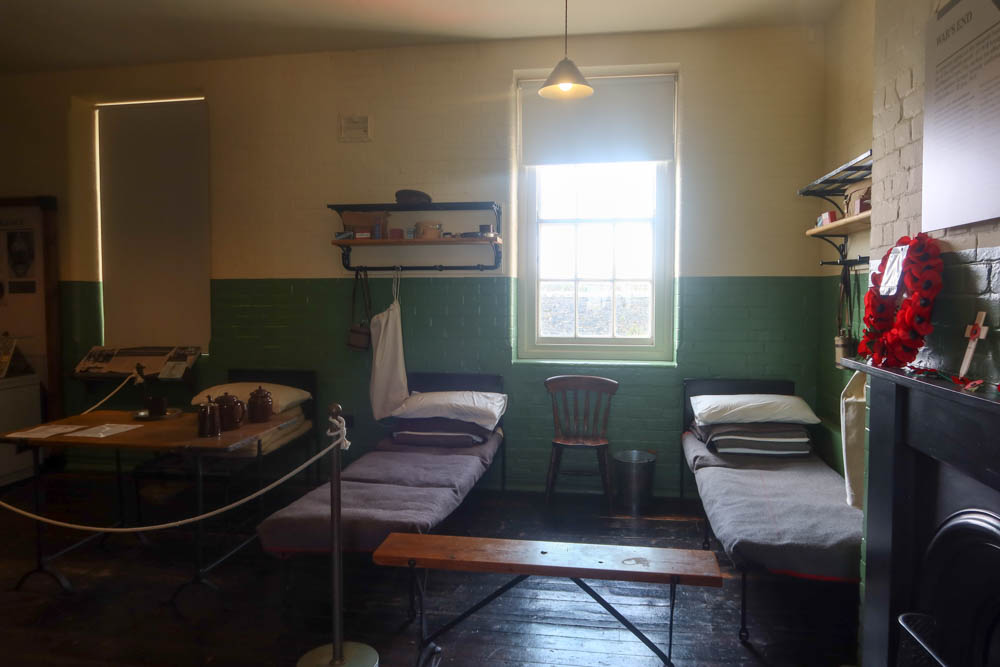
There is a World War One Exhibition at Pendennis, which is well worth checking out. It details the human side of World War One, focusing on soldiers who were conscripted into the army – many of who did not come home. Some were trained at Pendennis. It is thought-provoking and emotional in places and is well worth a visit.
Buy a souvenir in the shop
There is a well-stocked shop at Pendennis with lots of souvenirs, so if you want a memento to take home with you, you can check it out here!
Dine in the cafe
If you want to put your feet up after exploring the castle, grab a coffee or lunch at the cafe. They sell meals made with locally sourced ingredients and delicious coffee with dairy-free milk varieties.
Come back for one of the specialised events!
There are lots of specialised events at Pendennis, so you can visit them as well! For example, there are jousting events throughout the summer, where you can experience the Tudor’s favourite sport.
Where is Pendennis Castle?
The picturesque castle is located above the Fal Estuary – it was built there in a prime position to defend the estuary from potential French and Spanish invasion.
Of course, there is no threat of this nowadays, but it does mean you can enjoy some extraordinary views!
Can you go inside Pendennis Castle?
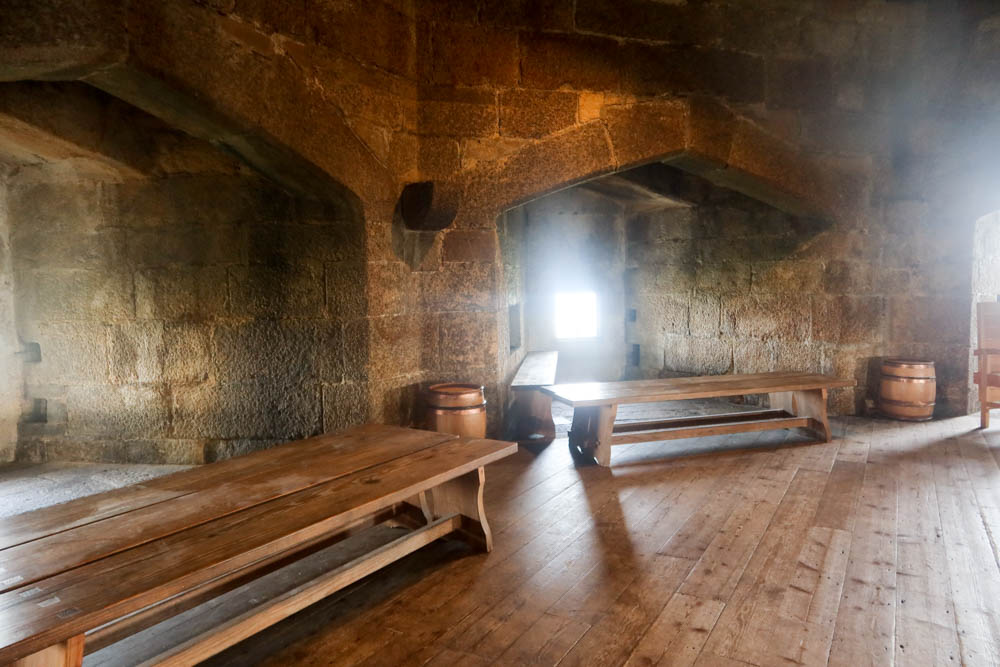
Of course! Pendennis Castle has been well restored but still maintains the feel of it as a Tudor castle.
So if you’re interested in architectural history, it is well worth visiting – but it’s also excellent if you want to learn more about Tudor history, as there are some information boards around the castle.
Pendennis Castle parking
Pendennis castle car park is about a five-minute walk from the castle itself, but make sure that you go directly to the car park rather than the front of the castle, which is the disabled drop-off area.
Do you have to pay to go to Pendennis Castle?

Yes, Pendennis Castle costs around £13.00 for an adult.
If you have an English Heritage membership card, you can get in without paying. If you go to lots of castles, it is well worth getting an English Heritage membership. It’s around £60 for a year and gets you into over 400 castles and historical sites.
Where to buy tickets
You can purchase tickets on the English Heritage website. Make sure that you bring your booking confirmation with you!
If you are an English Heritage member, you can get free entry – but in busy times, it’s still best to reserve your spot on the website.
Advanced booking is usually recommended, so you have guaranteed entry. However, tickets are also available on the door.
Pendennis Castle opening times
Pendennis Castle is open from 10:00 am to 5:00 pm every day.
Pendennis Castle accessibility
There is a drop-off area right outside the gates for disabled people, and most areas are wheelchair-accessible, apart from the top of the keep, which has steep steps. In the Royal Artillery Barrack Block, there is a lift to the upper floor.
Braille and large text guides are available.
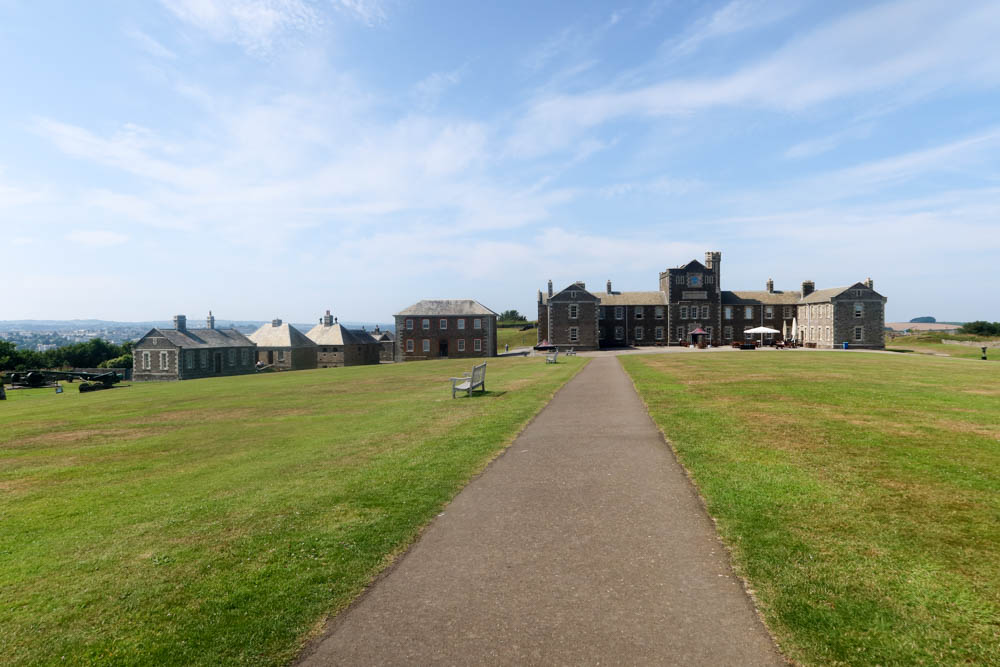
Is Pendennis Castle dog friendly?
Yes, dogs on a lead are welcome inside the grounds and even inside the castle itself.
Is there a Pendennis Castle cafe?
Yes, there is a cafe with indoor and outdoor seating. Enjoy coffee and lunch items like sandwiches, Cornish pasties and salads, and plenty of cakes. Gluten-free and vegan options are available.
Other facilities for visitors include picnic tables if you want to bring your own food and a shop.
How long do I need for Pendennis Castle?
I would say at least a couple of hours and up to about four if you want to explore everything very thoroughly.
It’s a fascinating place with so much history and a beautiful backdrop of views, so you certainly won’t get bored here!
When should I visit Pendennis Castle?

The busiest times are between one and two in the afternoon, so avoid those if you want to guarantee entry and don’t like crowding!
Pendennis Castle closes at 5 pm, and later in the afternoon is a much quieter time. Or, if you want to do a guided tour, it’s best to visit first thing in the morning.
Pendennis Castle is open year-round, and it has enough inside attractions that make it appealing on a rainy day.
However, the view is best in the sun!
Is it worth visiting Pendennis Castle?
Absolutely! There is so much to do here, from fascinating history to epic coastal views. It’s definitely my favourite castle in Cornwall.
I would say that it is definitely worth joining the English Heritage or Cornwall Heritage Trust if you are visiting, though.
English Heritage vs Cornwall Heritage Trust – which one should I join?
The English Heritage is ideal if you plan to visit other attractions all over the country within the next year. You will make your money back after going to just four or five places!
The Cornwall Heritage Trust is perfect if you are only going to see places in Cornwall.
Cornwall has five English Heritage properties (Tintagel Castle, Pendennis, St Mawes Castle, Chychauster and Launceston Castle), and the Cornwall Heritage Trust membership covers them all at a very low rate.
In fact, membership is about the same cost as a single entry to Pendennis and cheaper than a single entry to Tintagel Castle!
Where to stay in Falmouth
Oasis House is a property with cosy and comfortable rooms that are perfectly cleaned. It is a 10 minute walk from the harbour. Click here for rates and to reserve your stay.
Pendennis Lodge is a popular guesthouse close to the harbour and beach. The guesthouse is decorated in a boutique style and has an indoor pool. Click here for more information and to book your stay.
The Cutty Sark Inn is a luxury Falmouth hotel. It has beautiful bedrooms, some with four-poster beds and a restaurant. Click here to read more and to book your stay.
Other things to do in Falmouth
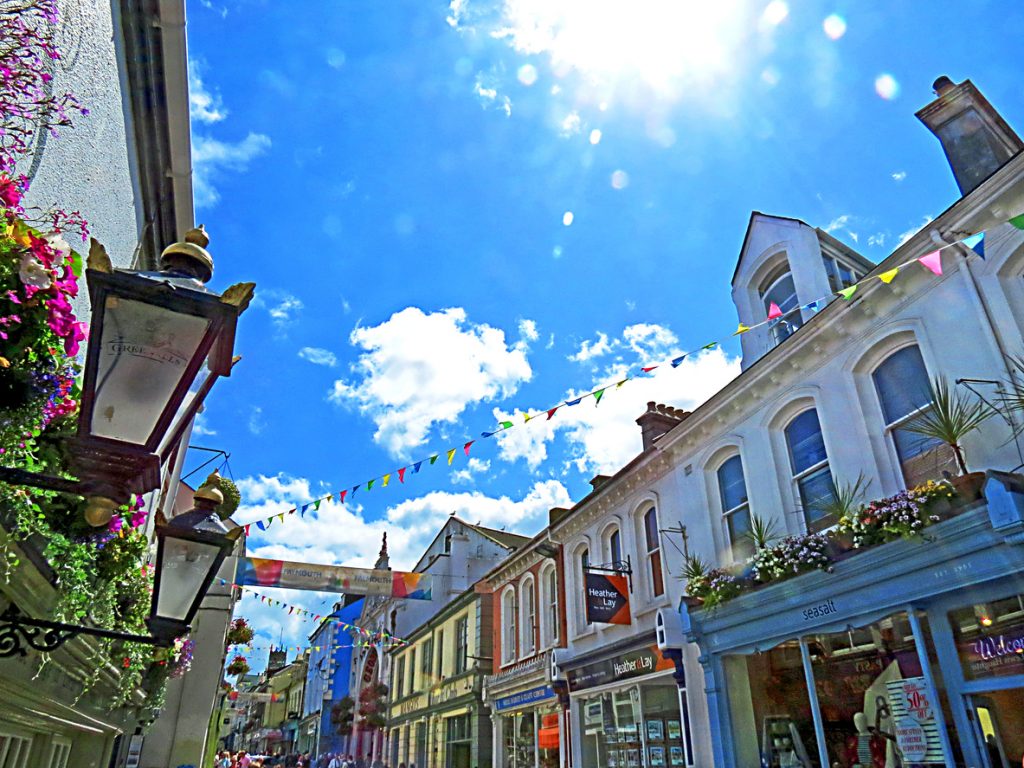
- Learn about boats and coastal creatures at the National Maritime Museum Cornwall.
- Experience life in Falmouth throughout the ages on a Falmouth Uncovered walking tour.
- Take in everyday life in Falmouth by visiting local pubs like Beer Wolf and The Front.
- Enjoy the amazing food scene of Falmouth, including Harbour Lights Fish and Chips (which does vegan fish!) and KimAsia restaurant which serves delicious Asian food.
- Check out all of Falmouth’s best beaches!
You can see my full travel guide to Falmouth here.
How to visit Pendennis Castle!
This Henrician castle is one of the best historical sites in Cornwall and a must-visit for anyone interested in Tudor history. I highly recommend visiting this coastal artillery fort while you are travelling around Cornwall!





